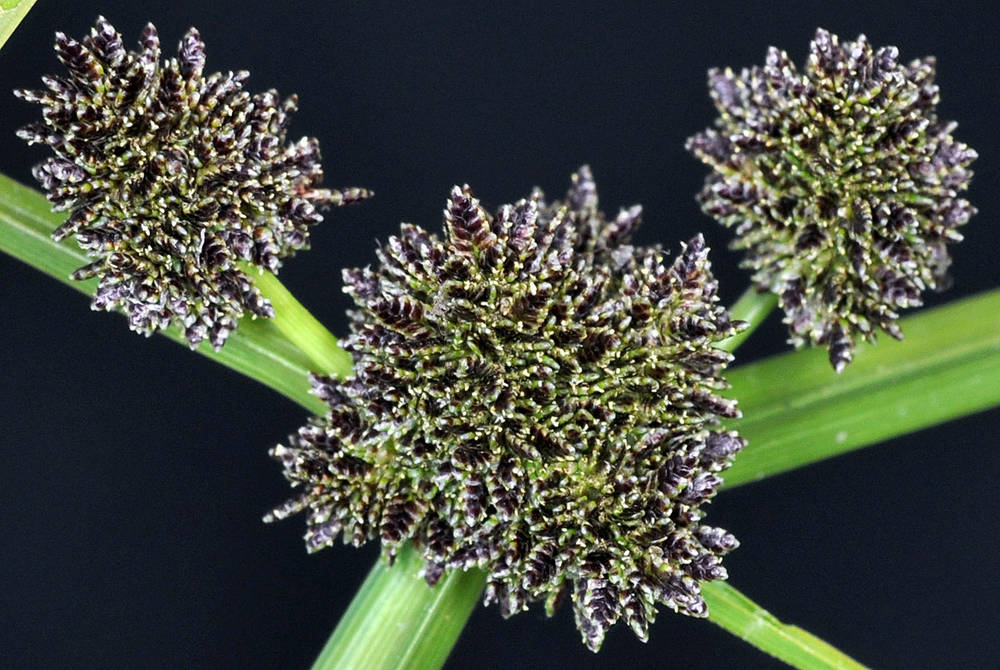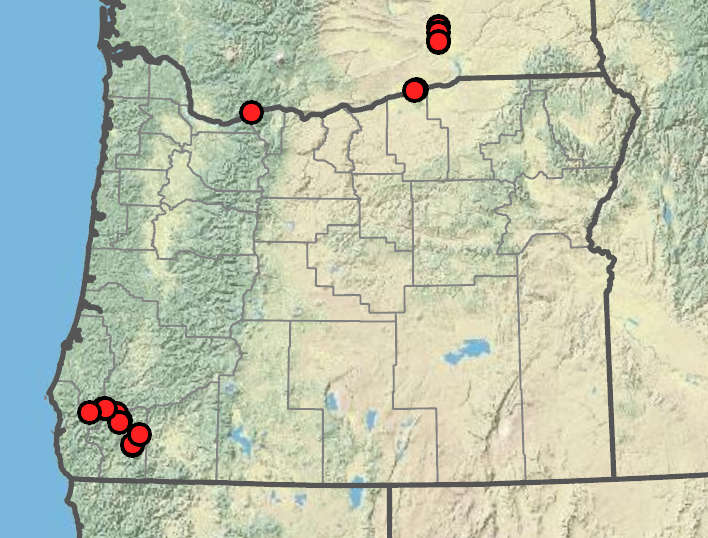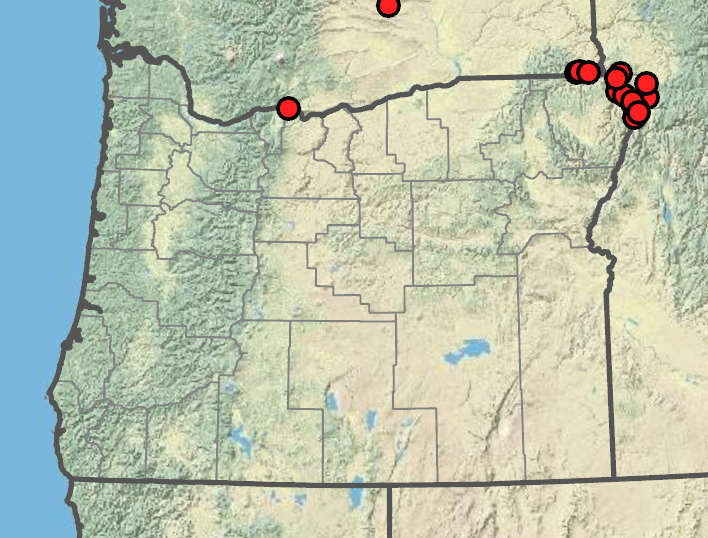Cyperus difformis
Cyperus schweinitzii
Asian flatsedge
Schweinitz's flatsedge
1–15, trigonous, 7–30 cm × 1.2–2.5 mm; soft (flattened in pressing).
trigonous; (10)20–50 cm × (0.6)1–2 mm.
(2)7–22 cm × 2.2–4 mm.
(2)20–35 cm × 2–6 mm;
proximal leaves bladeless.
clusters head-like; dense, 7–17(35) mm wide;
rays (0)1–5, 2–32 mm; longest inflorescence bract erect or nearly so, appearing as continuation of culm; other bracts horizontal to ascending.
clusters head-like to cylindric, 10–25 × 7–16 mm;
rays 3–5, 1.5–8(15) cm;
inflorescence bracts erect (or declined at most 25–30° from vertical).
30–120, oblong-ellipsoid, compressed; (2)3–5(6) × 0.8–1.2 mm; greenish brown to purplish brown; floral scales (6)12–20(30), obovate to orbiculate, 0.6–0.8 × 0.6–0.8 mm, stramineous to deep purple with clear margins; mid-stripe greenish, stramineous, or purplish;
lateral ribs 0; medial ribs 3;
apex mucronulate.
(1)5–10(20), oblong to linear-oblong, quadrangular in cross section, 7–10(18) × (2.8)3.2–4(4.5) mm;
rachilla more or less deciduous; wingless; floral scales deciduous; (1)5–10(14), spreading, broadly ovate to oblong-ovate; (2.3)2.8–3.2 × (2)2.4–3.2 mm, stramineous or dull whitish, sometimes also red-spotted, with green mid-stripe;
lateral ribs 2–3; medial ribs 3;
apex broadly rounded, often clear-erose; cusp 0.1–0.4 mm in proximal scales, 0.3–1 mm in distal scales.
anthers 0.1 mm;
styles 0.1 mm;
stigmas 0.1–0.3 mm.
anthers 0.8–1.4 mm;
styles 0.1–0.3 mm;
stigmas 1.5–3 mm.
obovoid-ellipsoid, 0.6–0.8 × 0.3–0.4 mm (as long as subtending scale);
base cuneate.
broadly ellipsoid, infrequently obovoid, 2–2.4 × 0.9–1.4 mm;
base cuneate to more or less stipe-like.
=166.
Cyperus difformis
Cyperus schweinitzii
Disturbed, sandy or muddy soils, sand bars, roadsides, sometimes on serpentine. 100–400 m. Sisk. CA, ID; east to NJ, south to Mexico; South America; Africa, Australia, Eurasia, islands of the Pacific and Indian Oceans; Exotic.
Cyperus difformis is recognized by its tight heads of small spikes with unusually small scales. The first Oregon collection was made in 2004.
Sand bars in rivers, sandy lake shores, and sandy disturbed meadows. 200–400 m. BW. WA; east to MA, south to AZ, TX, Mexico. Exotic.
The first Oregon specimens of this species were collected in 1994 along the Snake River and the lower reaches of its major tributaries. These specimens have been variously identified as C. schweinitzii, C. lupulinus ssp. lupulinus, and their hybrid C. × mesochorus. Cyperus lupulinus differs from C. schweinitzii in having more (15–60) spikes per inflorescence, forming a denser, nearly globose cluster that forces the inflorescence bracts to spread widely or reflex. Its anthers are 0.3–0.6 mm long, its styles are about 1 mm long, and its stigmas are about 1–1.5 mm long. The hybrids differ from C. lupulinus in having obconic spikes and ascending leafy bracts. They differ from C. schweinitzii in having smoother, not scabrous culms, a denser cluster of spikes, and spikes that are more flattened along the keels.
Barbara Wilson, Richard Brainerd, Nick Otting
Barbara Wilson, Richard Brainerd, Nick Otting




